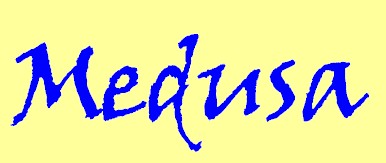
In Greek mythology, Medusa was a monster who was so ugly that a single glance at her would turn you into stone. She had a tangle of snakes for hair.
Our first experiment with multiple helicon sources
looked like a Medusa, with its cables distributing the RF power to each tube. Experiments were carried out with George Tynan and John Evans at PMT, Inc. and UCLA.
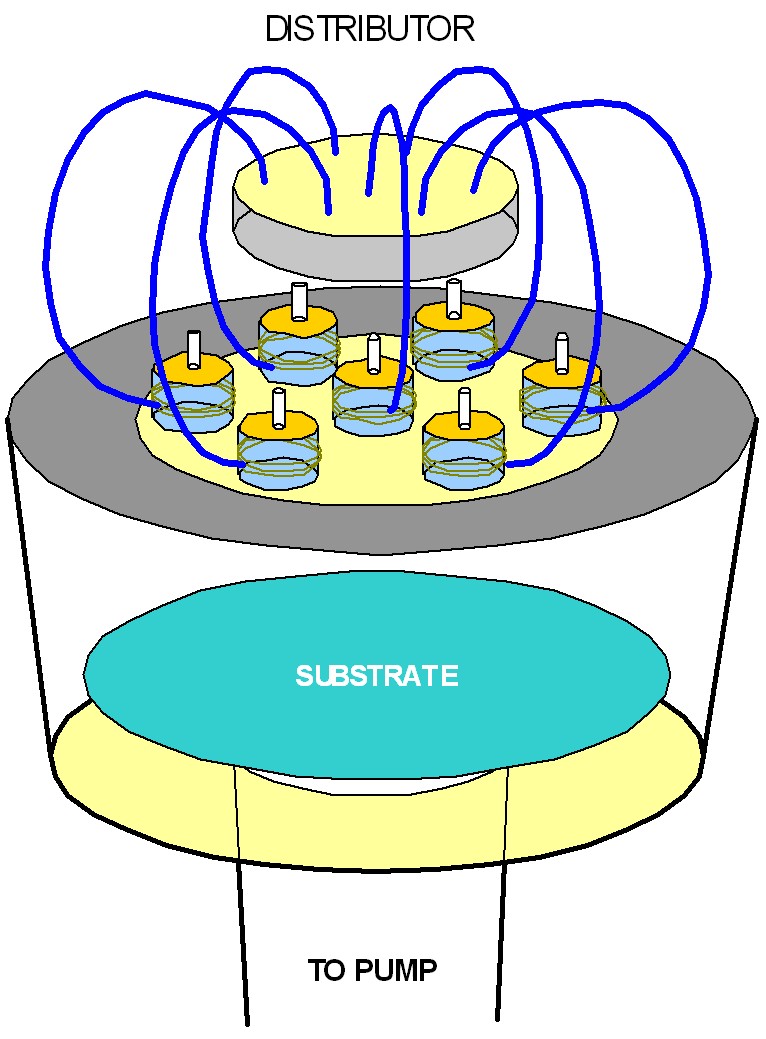
The PMT-UCLA Experiment: Stage 1
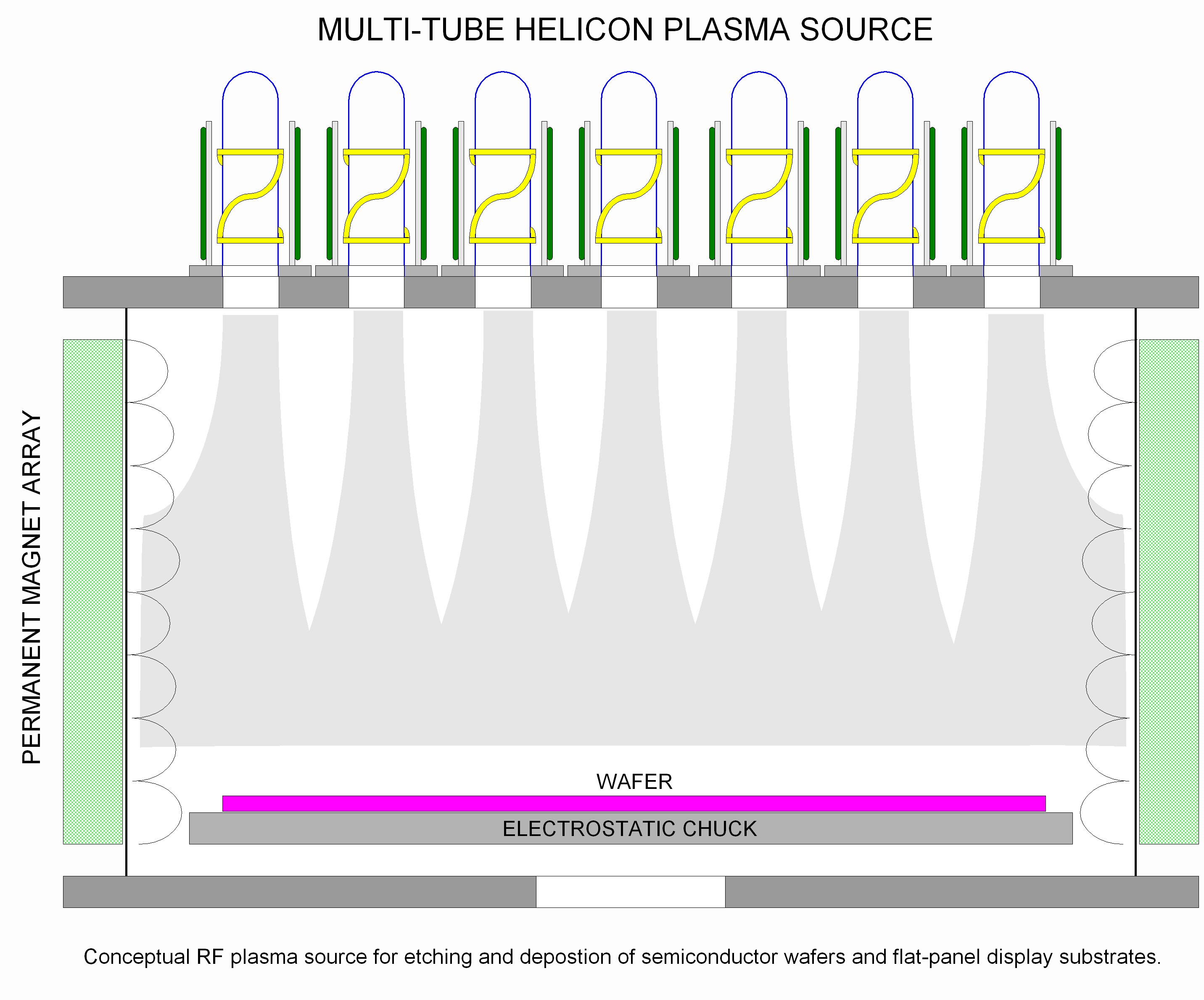
A circular array of 6 + 1 helicon sources injected plasma into a chamber with surface magnetic field confinement. Each source had a helical antenna and its own solenoid to produce the B-field. This system produced very low densities.
The PMT-UCLA Experiment: Stage 2
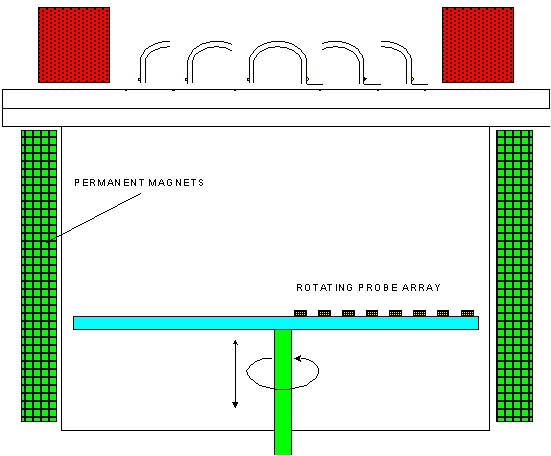
The second system had different helicon sources, a large B-field coil, and a "Lazy Susan" array of collectors to measure azimuthal symmetry.
Placement of the sources
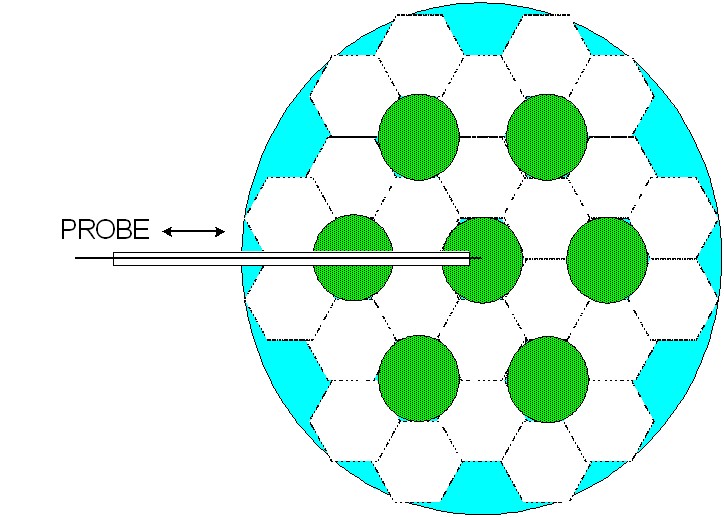
The radius of the 6-source ring was not optimized and should have been larger.
Results: Density
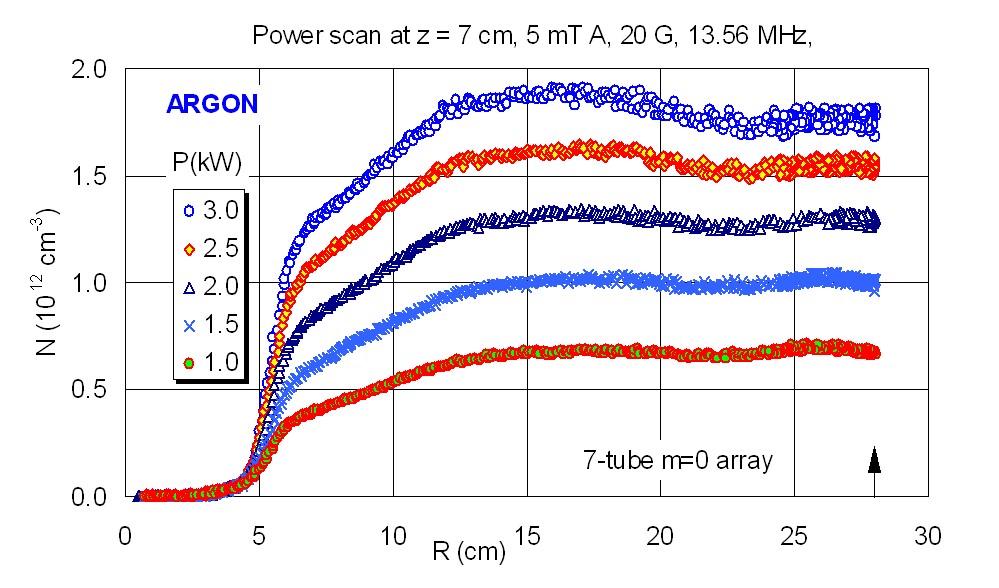
At 7 cm below the sources, a uniform plasma is achieved over a ~400 mm diameter without optimization of the array. With 3kW of RF power, the plasma density approaches 2 ´ 1012 cm-3.
Results: Uniformity
The azimuthal scans showed no m = 6 asymmetry due to the individual sources. The density was uniform to +/- 3%.
Further Development
Optimization of sources, spacing, and antennas was done, and a proof-of-principle experiment (below) succeeded in showing that permanent magnets can be used for good helicon discharges. A new machine, Medusa 2, was built to exploit these advances.
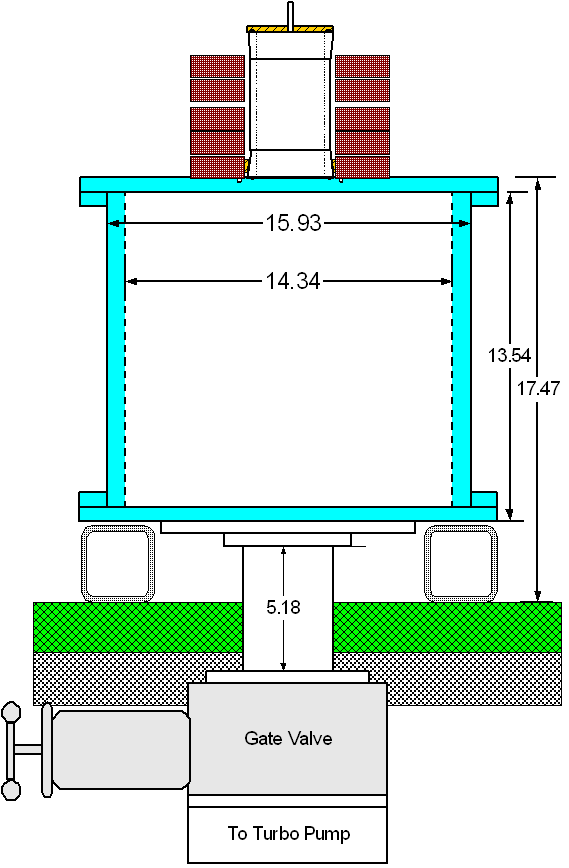
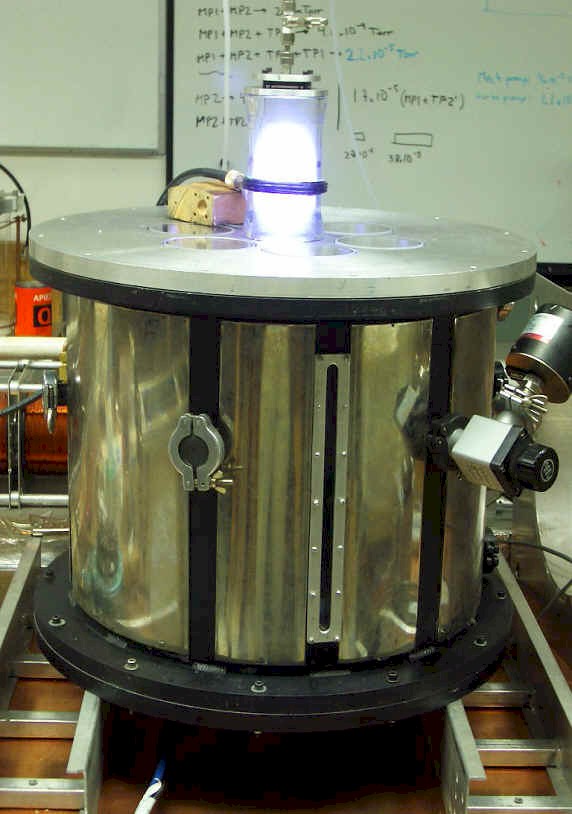
Link to Medusa 2